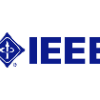The evolution of the IEEE 802.11 standards marks a significant throughput advancement in wireless access technologies, progressively increasing bandwidth capacities from 20 MHz in the IEEE 802.11a to up to 320 MHz in the latest IEEE 802.11be (Wi-Fi 7). However, the increased bandwidth capacities may not be well exploited due to inefficient bandwidth utilization on multiple channels. This issue typically occurs when the primary channel is busy, secondary channels (also known as non-primary channels) are prevented from being utilized even if they are idle, thereby wasting the available bandwidth. This paper investigates the fundamentals of the Non-Primary Channel Access (NPCA) protocol that was defined in IEEE 802.11 Ultra-High Reliability (UHR) group to cope with the above issue. We develop a novel analytical model to assess NPCA protocol performance in terms of the average throughput and delay. Via simulation, we verify that the NPCA network outperforms the legacy network by increasing at least 50% average throughput while reducing at least 40% average delay.
翻译:暂无翻译




